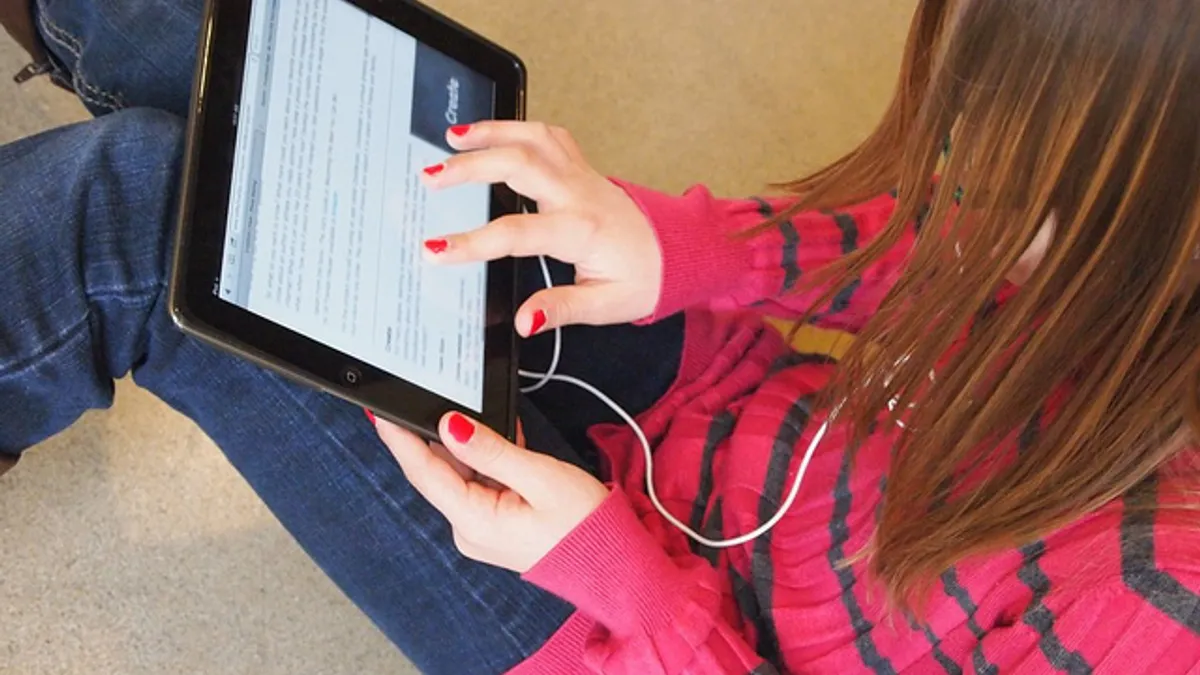Dive Brief:
- Though tools including fonts designed with thicker lines and differing styles are said to help support dyslexic readers, their effectiveness is being called into question, according to Edutopia.
- Experts note while reading can reveal signs of dyslexia in a learner, the disability is not rooted in vision but in language processing. A study from 2017 examined the font OpenDyslexic and found it reduced reading speed and accuracy compared to the fonts Arial and Times New Roman. A later study looking at the font Dyslexie found similar results.
- While literacy and dyslexia experts suggest educators put thought into the consistency and legibility of fonts, they also recommend placing more effort and focus on engaging all five senses and using tools such as audiobooks, note-taking apps and text-to-speech software to help all young learners in their reading journey.
Dive Insight:
Before introducing new tools and resources into the classroom, educators should ensure they’re accessible for students with all learning abilities, including dyslexia.
Early screening can help identify struggling learners, including students with dyslexia, so they get the support needed. But if new platforms or services aren’t fully researched before being introduced to classrooms, they may need to be retrofitted to learners’ needs.
Asking students what they think they need is a solid first step, said Lindsay Kubatzky, director of policy and advocacy for the National Center for Learning Disabilities.
“One of the things we have advocated for is to bring in students and parents to make sure the technology is accessible,” said Kubatzky. “Ask students, ‘Will this work for you?’ It is important to acknowledge they have ownership in their own learning.”
That exchange should not be limited to middle or high school students. Elementary students can also have a voice in their education. One way to encourage that is to engage in three-way conversations between parents, educators and students about which learning methods are working.
Educators can also consider universal design, which centers around adopting flexible educational tools and approaches that can be adapted for all students no matter their style of learning or needs.
To that end, Amelia Malone, director of research and innovation at NCLD, cautions against investing in the latest, flashiest product. Even fonts designed to support students with dyslexia may not be necessary. Malone said that the clearer the font, the better able all students will be at decoding it. That means steering away from curly fonts and not worrying as much about choosing between Arial and Times New Roman.
“When considering a lot of shiny tools, you want to vet that they actually work with students with learning disabilities,” said Malone. “There are a lot of good tools. But a tool is not a magic bullet but an integration of scaffolds that can benefit not just students with disabilities, but all students.”












